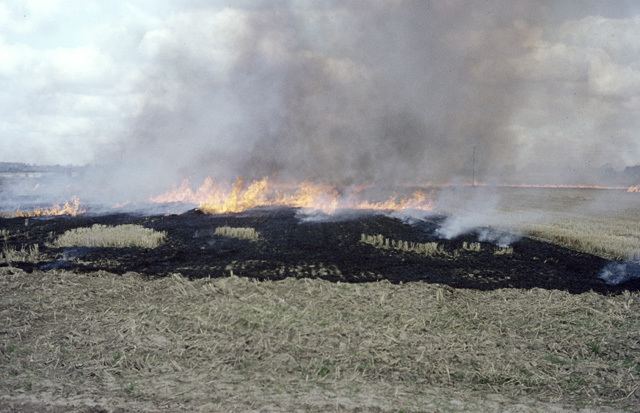Stubble burning is the deliberate setting fire of the straw stubble that remains after wheat and other grains have been harvested. The practice was widespread until the 1990s, when governments increasingly restricted its use.
The burning of stubble, contrasted with alternatives such as ploughing the stubble back into the ground has a number of consequences and effects on the environment
Stubble burning:
Quickly clears the field and is cheap.Kills weeds, including those resistant to herbicide.Kills slugs and other pests.Can reduce nitrogen tie-upHowever, it has a number of harmful effects on the environment:
Loss of nutrients.Pollution from smoke.Damage to electrical and electronic equipment from floating threads of conducting waste.Risk of fires spreading out of controlThere is a perception that stubble burning contributes to atmospheric CO2. However carbon dioxide releases are only slightly greater than those from natural decomposition
Stubble burning has been effecively prohibited since 1993 in England and Wales. A perceived increase in blackgrass, and particularly herbicide resistant blackgrass, has led to a campaign by some arable farmers for its return.In Australia stubble burning is "not the preferred option for the majority of farmers" but is permitted and recommended in some circumstances. Farmers are advised to rake and burn windrows, and leave a fire break of 3 metres around any burn off.In the United States, fires are fairly common in mid-western states. Many of the fires in the video are started deliberately.In France, stubble burning is said to be fairly common.In China, there is a governmental ban on stubble burning, however the practice remains fairly common.In northern India, despite a ban by the Punjab Pollution Control Board, the practice of stubble burning is still practiced. Authorities are starting to enforce this ban more proactively.Stubble burning is allowed by permit in some Canadian provinces, including Manitoba where 5% of farmers were estimated to do it in 2007.
